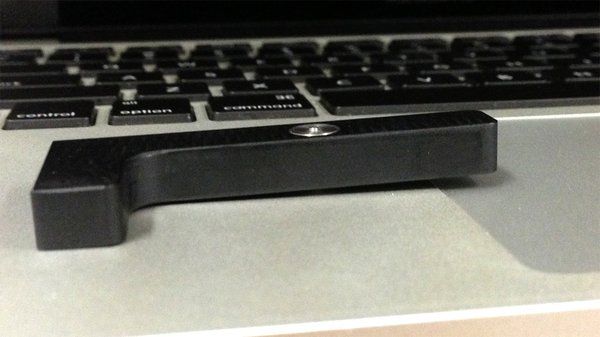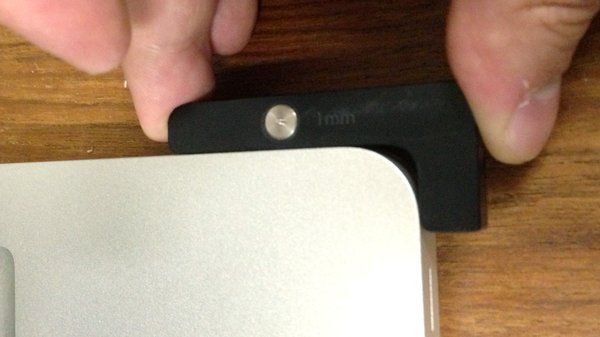Why is it that some people can walk into their local Apple Store with a broken MacBook and walk away with a free replacement, and other people are turned away, with Apple claiming the repair is due to user error… even if it isn’t?
It has less to do with whether or not you actually voided your warranty than if Apple thinks they can prove you voided your warranty. And the most important tool Apple uses to prove you’re responsible for the damage to your own machine? It’s a tool that inspects dents.
The guys over at Tested spoke to an Apple Certified Macintosh Technician, or ACMT. An ACMT is a technician who works at an Apple Authorized Service Center, where people can get warranty service when they don’t live near an Apple Store. In other words, this is a person with an intimiate familarity with how Geniuses determine whether or not to replace or repair a product in-warranty.
So here’s how it works. When a Genius or ACMT looks over an Apple product to see if it qualifies for warranty repair, what they are really doing is trying to prove it doesn’t qualify for warranty repair. The most obvious way to deny someone warranty service? Dents! And Apple has issued its Geniuses and ACMTs a special tool called the Dent Inspection Tool to help measure dents.
Here’s how it works:
The Dent Inspection Tool is designed to check three types of visual damage on any portable aluminum Mac:
1. Dents in the Lower and Upper casing (bottom plate/sides/keyboard). This is tested by using the side with the 1mm spike and placing the spike in the center of the dent. If any part of the rest of the tool is able to lay flat, a repair center will be able to deny the warranty and in apples view the warranty is voided.
2. Dents in the display clamshell casing. This is tested using the opposite side of the tool, which has a smaller spike that is not labeled (possibly 0.5mm or less). The same rule applies: when siting the spike in the center of a dent, if the tool sits flat the warranty is voided.
3. Dents on the corners of the device. This is tested as seen in the image below, with the tool lining it up along the sides of the Macbook. If it does not sit flat along the edges, the warranty is voided.
That, of course, sounds hugely frustrating and arbitrary. I, for example, picked up a dent on my MacBook Air at some point, but the machine still works fine. If it were to suddenly have a logic board failure, Apple could refuse to replace my MacBook Air under warranty because of a slight ding in the corner of the screen.
Of course, not all Geniuses or ACMTs rely solely upon the Dent Inspection Tool when determining whether to take a machine in; some Geniuses might take pity upon you, so it doesn’t hurt to be polite. Even so, there are other ways in which Apple can deny you warranty coverage, including the famous liquid indicator test, and these two programs:
AST (Apple Service Toolkit)–A server application which allows machines to boot a quick and dirty diagnostics image that checks if it can detect and communicate to each part of the machine. It is also able to provide reports of the battery capacity and let technicians know if it required to be replaced. The AST Is designed to be run in front of the customer to explain potential issues when booking in the machine and to show them that the issue has been resolved when it is collected after repair.
ASD (Apple Service Diagnostic)–This is the REAL testing software. It runs actual stress testing software on the hardware. As an example it checks RAM for errors, test read/write speeds on the hard drive, monitors fan speed and temperature sensors, and runs OpenGL graphics tests.
There is a very long list of tests that it runs through, and at the end there will either be a massive green rectangle that says pass or a massive red one that says fail.
The walkaway here is that while Geniuses and ACMTs can use their better judgement when determining whether or not to take an aluminum Mac in for warranty repair, if you have picked up so much as a slight nick on your machine at any point, the dice are loaded against you. Put your MacBook in a case if you want the best chance at warranty repair.
Source: Tested.com



